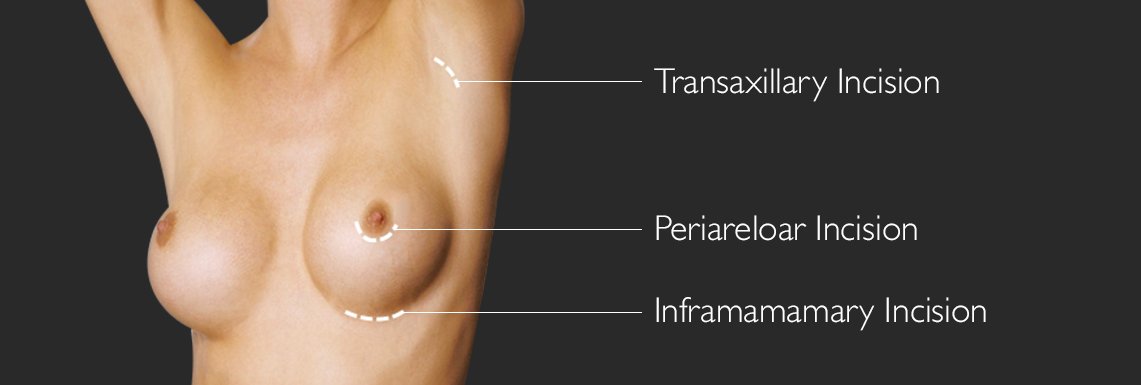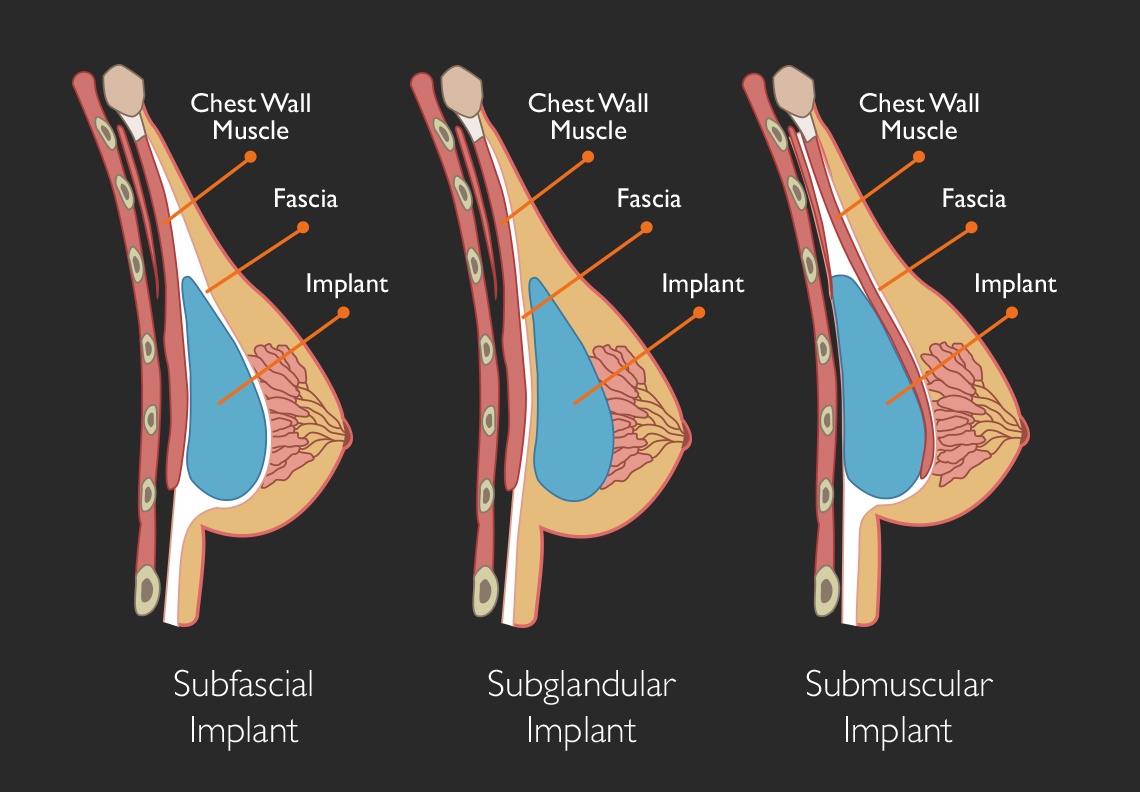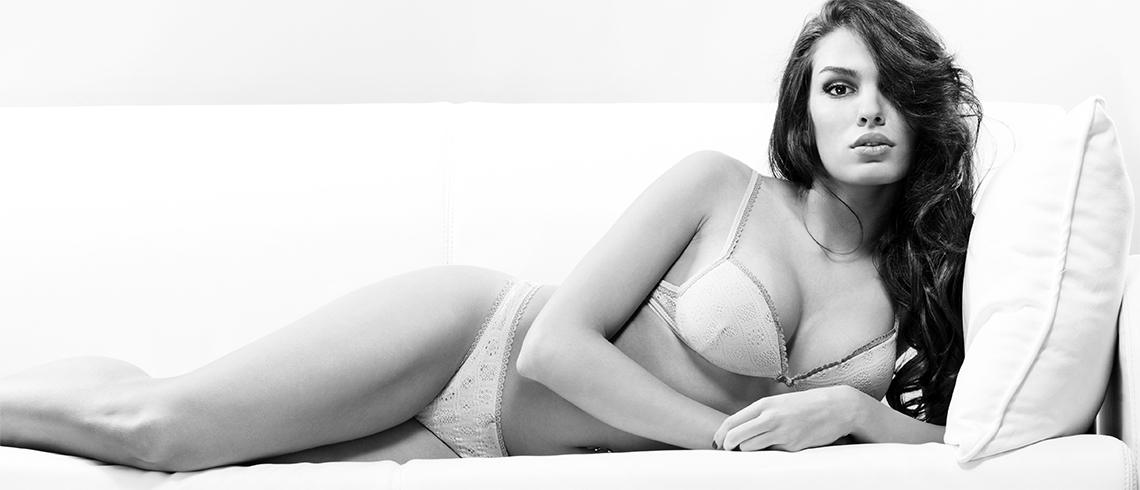Breast / Breast Augmentation
Breast Augmentation
Caring about your appearance extends beyond vanity. For many women, self-image is central to quality of life, social interaction and self-esteem.
Request a ConsultationCaring about your appearance extends beyond vanity. For many women, self-image is central to quality of life, social interaction and self-esteem.
Request a Consultation
Royal College-certified plastic surgeon Dr. Marc DuPéré began specializing in breast enhancement surgery back in 2001. He has now become one of the most sought-after plastic surgeons for breast augmentation with implants and fat transfer breast augmentation in Toronto.
The demand for breast augmentation to enhance one’s figure and confidence is ever-growing. If individual styles of clothing make you feel self-conscious, or if you’ve dreamed of balanced proportions and life without padded bras, breast implant surgery could make a significant difference for you. Dr. DuPéré will help you reach your expectations by achieving beautiful, natural-looking breast augmentation results.
A breast augmentation may be beneficial to you if any of the following apply:
The choice of whether to get silicone or saline implants depends on your preferences and priorities. During your one-on-one consultation with Dr. DuPéré, you will go over the benefits of each implant type and which would best suit your needs.
Silicone implants are completely risk-free implants that appear and feel more like real breast tissue, providing patients with a more natural outcome than other types of breast implants. Silicone implants can be positioned both under and over the pectoral muscle since they are less likely to rupture or exhibit other aesthetic issues.
Silicone implants come in two varieties:
Cohesive Silicone Gel Implants: These implants, according to many of our patients, feel the most like real breast tissue. Although they are soft, the cohesive gel utilized in them is thicker than that used in earlier silicone implants.
“Gummy Bear” Implants: Because of the silicone filling’s consistency, which is similar to a gummy candy and holds its shape even when cut, these implants have the moniker “gummy bear.” Although firm, they are yet flexible and soft.
Saline implants are filled after being placed, allowing Dr. DuPéré to make the incisions very small and fine-tune the outcomes to guarantee symmetry in the breasts. They are therefore a fantastic option for patients who prefer to have their incisions placed in the armpit’s natural crease. Saline implants are frequently chosen by women who want to appear fuller and rounder; they also feel firmer than silicone gel implants. Saline implants tend to be slightly less expensive than silicone implants, however they are more prone to apparent rippling and wrinkling than silicone implants.
Dr. DuPéré can discuss the benefits and drawbacks of each choice with you and choose the implant that best suits your priorities during your consultation.
Breasts come in several shapes and sizes, and every woman has a different concept of her ideal breasts. Dr. DuPéré’s Toronto breast augmentation patients select their breast implants with the help of the newest sizers on the market. He recommends that patients bring a sports bra that will fit the size of breasts they desire so they can view sizers while looking in a mirror. Dr. DuPéré creates natural-looking, proportional breasts with:
Thousands of Toronto breast augmentation patients restore post-baby breasts, enhance their curves, and gain the feminine shape they’ve always wanted through a quick-recovery breast augmentation at the VISAGE Clinic.

When you choose breast implants at our Toronto-area clinics, you have several options, including size, material used to fill the implants, smooth or textured, profile, and shape. The illustration shows the difference between round and anatomically shaped implants.
It’s hard to describe the positive impact increased cleavage, volume and balanced body proportions can have. Today’s breast implants are incredibly natural-looking and available in a diverse range of sizes and shapes to suit any personal style or unique measurements. Your ideal fit is waiting for you.
Dr. DuPéré will help you choose the right implant for you, the location of the incision, the position of the implants and the right technique to reach your expectations. You can learn more about the procedure on our Breast Augmentation FAQ page. When tailored to your goals, breast augmentation can improve your confidence dramatically.
Your initial visit with Dr. DuPéré is an important opportunity to candidly discuss how you feel about your breasts, as well as your short-term and long-term goals. You can also expect a thorough examination of the options available to you. As you’ll learn on our breast implants page, implants are so much more than saline and silicone. You can expect to have an honest conversation with Dr. DuPéré regarding the best implant type for you.
You should also expect to talk about your medical history, including any relevant past conditions, surgeries, and any medicines or supplements you presently take. While breast augmentation with Dr. DuPéré is very safe, he may choose to modify his technique depending on your overall health.
Dr. DuPéré also conducts a physical examination of your breasts, taking measurements to help him customise his surgical approach. Together, you’ll plan your incisions, the potential size and shape of your implants, and other factors related to your surgery. You’ll also discuss the recuperation process. Dr. DuPéré wants you to think of your consultation as a 2-way conversation. Come to your visit armed with questions and concerns, and he’ll do his very best to satisfactorily address each of them.
Depending on the patient’s needs, Dr. DuPéré offers numerous incision types and implant placement options. He will discuss these options at your consultation. Read on to learn more.
Dr. DuPéré offers 3 distinct incision options for breast augmentation patients, and each one offers its own set of benefits:

Once he has made the incisions, Dr. DuPéré carefully and meticulously develops a precise pocket, or compartment, where the implants will be placed. In cases involving saline implants, the implants are placed empty and filled once they’re in place. He sits the patient slightly during the procedure and evaluates the implants for symmetry and closes the incisions.
Cohesive silicone gel breast implants are the most popular with patients because they generally look and feel more like natural breast tissue. This video demonstrates how the gel remains in place even if the implant ruptures, which is a very rare situation.
There are 3 options for where Dr. DuPéré can place your breast implants:

Dr. DuPéré performs breast augmentation while you are under either general anesthesia or local anesthesia with sedation. The type of anesthesia that’s appropriate for you depends on the extent of your surgery, your overall health, and other factors. During your consultation and pre-op appointment, you and Dr. DuPéré discuss the details of your surgery more thoroughly.
Most breast augmentation procedures last from 1.25 to 1.5 hours, although if you opt for a combined procedure, your surgery will last a bit longer. During your surgery, Dr. DuPéré begins by making incisions based on your preferences and the plans you made in the pre-op process. He uses meticulous techniques to create a pocket within the breast tissue, directly visualizing the area to minimize bleeding and create the natural-looking cleavage desired by most of his patients.
Once he has placed the implants and evaluated them for symmetry, Dr. DuPéré closes the incisions with sutures and bandages, and dresses the breasts with a supportive garment.
Using purified fat cells taken from an area of the patient’s body where it’s unwanted and then transferring the fat to the breasts is a relatively new technique that’s an option for women who want only a modest increase in breast size. It’s also an excellent technique for correcting breast asymmetry or to camouflage implant ripples for patients with thin breast skin. Fat grafting, sometimes called fat transfer, involves removing fat using liposuction and then separating the cells from impurities with a centrifuge.

Fat grafting can also be used to enhance cleavage with breast implants, but this process requires a plastic surgeon with excellent technical skills to avoid a complication called symmastia (“uniboob”). You can learn more about this procedure in one of my blog posts.
Among the drawbacks of fat grafting for breast augmentation is that this procedure is less precise because some of the transferred fat won’t survive, and it may take additional procedures to fine-tune the results. Fat transfer is only for women who want an increase of a cup size or less. Additionally, cysts or calcified fat—although rare—can develop and require imaging tests or biopsies to rule out disease.
Breast augmentation is exceedingly popular as a solitary procedure, but it can also work well as a complementary procedure, enhancing the results of another surgery. Some of the most popular options include:

Breast augmentation patients can usually return home the day of their procedure. On average, women feel discomfort for 3 to 7 days after surgery. In most cases, stitches are internal and dissolving.
We recommend our breast enlargement patients in Toronto initiate walking and stretching on the day of the procedure, avoid exercise for 4 weeks and avoid upper chest exercises for 8 weeks.
Patients generally wear a compression garment for 2 days, followed by a comfortable sports bra. Push-up and underwire bras should be avoided for 6 to 8 weeks.
Some women will require drains for a few days.
Most women can return to desk work after 7 to 10 days.
Even though breast implants have been studied for more than 2 decades and very rarely produce side effects, researchers have identified an uncommon condition called breast implant-associated anaplastic large cell lymphoma (BIA-ALCL). This condition has only been documented thus far in patients with textured implants. It is very treatable when diagnosed early. It’s important to know that Dr. DuPéré uses mostly smooth implants. BIA-ALCL symptoms may include swelling, redness, changes in firmness, or lumps around 1 or both implants. If you are experiencing these or any other symptoms, please contact us for an appointment. In the vast majority of patients, these symptoms are not serious and may or may not require treatment.
Much has been written about this condition, but many misconceptions persist. BII is not a diagnosis but rather an observation of ambiguous symptoms, such as fatigue, hair loss, and joint pain. The term breast implant illness is almost unknown to immunologists. There is no evidence of a causal link to breast implants, but more research is needed to assess any potential links between breast implants and other diseases. Rest assured that Dr. DuPéré remains up to date with the latest research, listens carefully to his patient’s symptoms, and reacts scientifically to whether there is actually a connection between the symptoms described and breast implants. He provides appropriate referrals and testing when needed.
Every procedure involves inherent risks. Although serious complications are extremely rare, Dr. DuPéré educates every patient about potential risks.
Those risks can include scarring and issues with wound healing, discomfort, bruising, loss of sensation over the breast and, rarely, the nipples, potential breast-feeding issues, palpable or visible implant edges, sagging of the breasts, loss of cleavage, fluid accumulation around the implants, asymmetry, capsular contracture, deep vein thrombosis, and general-anesthesia-related issues.
It is safe and definitely viable to breastfeed after a breast augmentation. Dr. DuPéré is able to perform the operation utilizing tactics and techniques that maximize the potential for nursing, even though there are some risks involved that could still affect your ability to breastfeed. If you intend to breastfeed your child as well as have further children in the future, it is vital that you communicate this information to Dr. DuPéré during your consultation. This will enable him to customize your procedure to meet your specific needs.
In relation to breastfeeding, it’s crucial to be aware that pregnancy may have an effect on how the breasts look. You can experience these changes whether or not you’ve had breast augmentation. Increased skin laxity, sagging, and a reduction in breast volume are a few physical changes brought on by pregnancy and breastfeeding. These modifications may affect the procedure’s outcomes and harm your breast beauty if you get breast implants. For this reason, when considering whether to get breast augmentation, the timing of a potential pregnancy should be taken into consideration. Dr. DuPéré suggests that you think about delaying your surgical plans until after childbearing if you want to get pregnant soon.
That said, not every woman who has breast augmentation will experience changes to the appearance of her breasts after giving birth. In fact, the majority of patients who have had breast augmentation in the past don’t require additional surgery. If the enhanced breasts do noticeably change after delivery, plastic surgery can fix the problem. The procedure may involve a Breast Lift in addition to changing the implant’s size. The best course of action to prevent the need for additional surgeries would be to delay surgery until after childbearing, even though the timing may not be ideal for younger patients.
Dr. DuPéré takes special care to put the incisions in discreet locations for unnoticeable post-surgical scarring, even though any form of surgery is likely to leave some sort of scar. The typical incision sites for the surgery are either within an underarm fold, around the areola, or along the breast fold. The majority of patients report that scars are almost imperceptible or well covered beneath a bra or bikini once healing is complete.
Following surgery, all scars will go through a maturation process. Because minimal scar tissue has formed, the incision line may not even be visible in the first few weeks. The scar may actually get pinker, higher, and slightly firmer over the next months. This stage corresponds to the time when the body is forming scar tissue to strengthen the incision site. The scar then starts to heal after this phase. The scar will then get softer, lighter in color, and less apparent throughout this stage as well. That said, the visibility of any scarring can be reduced by adhering to Dr. DuPéré’s post-operative advice on good wound care.
Breast augmentation is not just about increasing the size and shape of your breasts. It offers a range of benefits that go beyond aesthetics. One less commonly known advantage is the boost in self-confidence it provides. Many women who undergo breast augmentation report feeling more comfortable and satisfied with their bodies, which can have a positive impact on their overall self-esteem.
Additionally, breast augmentation can improve body proportion, creating a more balanced silhouette. It can also open up new clothing options, allowing you to confidently wear outfits you may not have considered before.
Breast implants can indeed present challenges when it comes to mammogram readings. The implants can sometimes obstruct parts of the breast tissue, making it harder for radiologists to obtain clear images. However, this does not mean that mammograms are ineffective for women with breast implants. Experienced radiologists are trained to perform specialized techniques, such as implant displacement views or ultrasounds, to ensure accurate results. It is important to inform the mammography technician about your implants beforehand so they can take the necessary steps to obtain the best possible images.
The experience of the plastic surgeon is a critical factor in determining the safety, precision, and aesthetic outcomes of your breast augmentation procedure. An experienced surgeon such as Dr. DuPéré has performed numerous breast augmentation surgeries and has a deep understanding of the various techniques and implant options available. He can guide you through the decision-making process, recommend the most suitable implant size and shape for your body, and ensure that the procedure is performed with the highest level of skill and expertise. Choosing a board-certified plastic surgeon with a proven track record in breast augmentation is essential for achieving satisfactory results.
Breast asymmetry, where one breast is larger or shaped differently than the other, is a common concern among women. Breast augmentation can indeed help correct this asymmetry and achieve a more balanced appearance.
Depending on the degree of asymmetry, the surgeon may choose to use different-sized implants or adjust the pocket size during the procedure to create symmetry. This tailored approach allows for a customized solution that addresses the specific needs and goals of each individual. By choosing an experienced plastic surgeon, you can ensure that your breast augmentation procedure is carefully planned and executed to achieve optimal symmetry and balance.
Capsular contracture is a potential complication that can occur after breast augmentation surgery. It is a condition where scar tissue forms around the implant, causing it to harden and tighten. This can lead to breast firmness, distortion, and discomfort. While the exact cause of capsular contracture is not fully understood, several strategies can help minimize its occurrence.
First and foremost, choosing appropriate implant placement, such as submuscular placement, and selecting implants with textured surfaces can reduce the risk of capsular contracture. Following post-operative instructions diligently, including proper implant massage techniques, can also play a role in preventing this complication. Regular follow-up appointments with your plastic surgeon will allow for close monitoring and early detection of any signs of capsular contracture, ensuring prompt intervention if necessary.
There is no specific age limit for breast augmentation surgery. The most important consideration is whether a person’s breasts have fully developed. It is generally recommended to wait until breast development is complete before undergoing breast augmentation. This typically occurs by the late teens or early twenties. However, the decision to undergo breast augmentation should be based on individual circumstances and personal goals. During the consultation process, your plastic surgeon will assess your physical maturity, emotional readiness, and overall health to determine if you are a suitable candidate for the procedure.
Breast implants are not considered lifetime devices, and it is generally recommended to plan for implant replacement or revision surgery at some point in the future. While individual experiences may vary, the average lifespan of breast implants is typically around 10 to 15 years. However, it is important to note that some implants may last longer without complications.
Regular follow-up appointments with your plastic surgeon are crucial to monitor the condition of your implants and detect any signs of potential issues, such as implant rupture or capsular contracture. If you experience changes in the appearance or feel of your breasts, it is important to consult with your surgeon promptly. They will assess the condition of your implants and recommend appropriate measures, including potential implant replacement, if necessary.
Breast augmentation alone is not typically recommended for correcting significant breast sagging, also known as ptosis. In cases of mild sagging, breast augmentation with implants may provide a slight lifting effect due to the added volume. However, if you have moderate to severe breast sagging, a breast lift procedure may be necessary in combination with breast augmentation. A breast lift removes excess skin, repositions the nipples to a more youthful position, and tightens the breast tissue to achieve a firmer and lifted appearance. Combining a breast lift with breast augmentation can address both the size and position of the breasts, resulting in a more youthful and proportionate outcome.